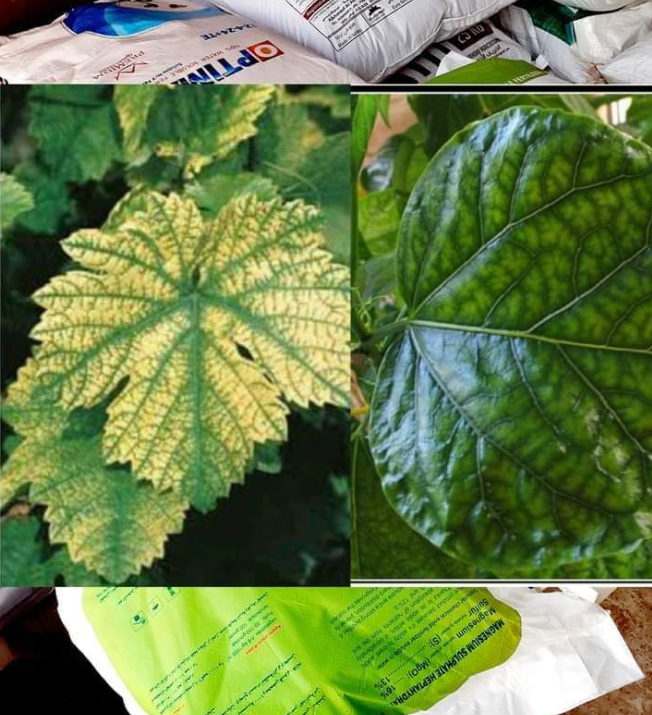It plays a major role in the formation of chlorophyll, which is essential for photosynthesis.
It supports the process of cell division.
It plays an active role in the plant’s metabolism by acting as an enzyme activator in the production of proteins and carbohydrates.
Plants cannot absorb potassium and phosphorus properly without a sufficient amount of magnesium.
It helps prevent leaf yellowing.
It promotes the development of a strong root system and firm, sturdy stems.
⏪ Magnesium Deficiency Symptoms: The spread of mottled spots on older leaves. Brown spots may appear on the edges of the leaves. As the deficiency increases, the entire leaf turns yellow, leaving only the green veins, which can affect plant performance and the fruit set. Magnesium fertilization can also affect the plant’s performance.
⏪ Symptoms of Excess Magnesium:
Excess magnesium in the soil weakens the calcium in the plant, causing it to suffer from nutrient deficiencies.
Therefore, we recommend not increasing the percentage of magnesium fertilizer in the plant.
How to Use Magnesium:
You can moisten 5 grams of chelated magnesium fertilizer in 5 liters of water to create moisture, or spray the leaves directly.
Magnesium fertilization is repeated every 20 days.


